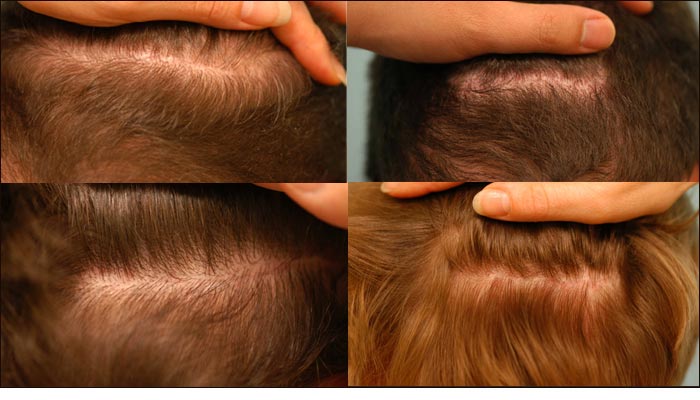Donor Closures in Hair Transplant: Are they All the Same?
We too often focus on the results of hair restoration, i.e., how the transplanted hairs look, and forget the importance of the donor area. I like to call this the “bank” since withdrawals are made from this area and it is important to preserve the “funds” here for future withdrawals. However, too often, the donor area is abused so that future sessions are compromised. In addition, there is poor wound healing, which is a dreadful thing.
Good donor closures always begin with good donor harvesting. No matter how meticulous the donor closure is, if the donor harvesting is poor the donor closure will be poor. Why is this? Let’s begin with the importance of tumescence. Tumescence is a fluid placed under the skin to elevate the follicles very far away from the nerve and blood supply so that during harvesting the underlying nerves and blood supply remain untouched. This protection leads to fewer issues of discomfort afterward and preserves blood supply for wound healing and acts to support graft growth. In addition, adequate tumescence also straightens and separates the hair follicles out leading to very little transection (injury) to the hair follicles during harvesting (if performed by an experienced hair-transplant surgeon). If the hair follicles are transected, not only do you get a wasteful harvest with lost hairs but also the wound will not heal as well since there will be transected hairs remaining in the wound. For all of these reasons, a great donor closure must begin with a great donor harvest.

Our Excellent Donor Closures
Let’s now turn our attention to the closure itself. Like any wound closure, limiting skin tension helps to minimize possible wound separation. Accordingly, I close every incision with two layers. A deep closure with 2-0 Vicryl sutures placed so that even after the skin sutures are removed, the wound carries very little risk of widening. Secondly, I perform in individuals with limited wound tension a procedure known as a trichophytic closure (read my post “Understanding the Role of the Trichophytic Closure in Hair Transplants“) This procedure involves removing a tiny 1 mm lip of skin off of the inferior wound edge through which hairs can grow through the scar to make the scar much more difficult to detect. Finally, I close my incisions with a non-absorbable (for less tissue reaction) 3-0 nylon suture that I remove at 10 days to complete my closure. Each of my suture throws pass through only the mid-follicle level to limit the risk of ensnaring any follicles into the incision and also which limits discomfort that occurs when sutures pass through the mid-skin depth. By performing all of these methods, I am able to accomplish consistently excellent harvests and virtually undetectable closures, as the wound matures during the months that follow a hair-transplant procedure.
Samuel M. Lam, MD, FACS is a board certified hair restoration surgeon in Dallas, Texas. To learn more about Dr Lam’s hair transplant procedures please visit our website hairtx.com or call 972-312-8105 to schedule a consultation.




